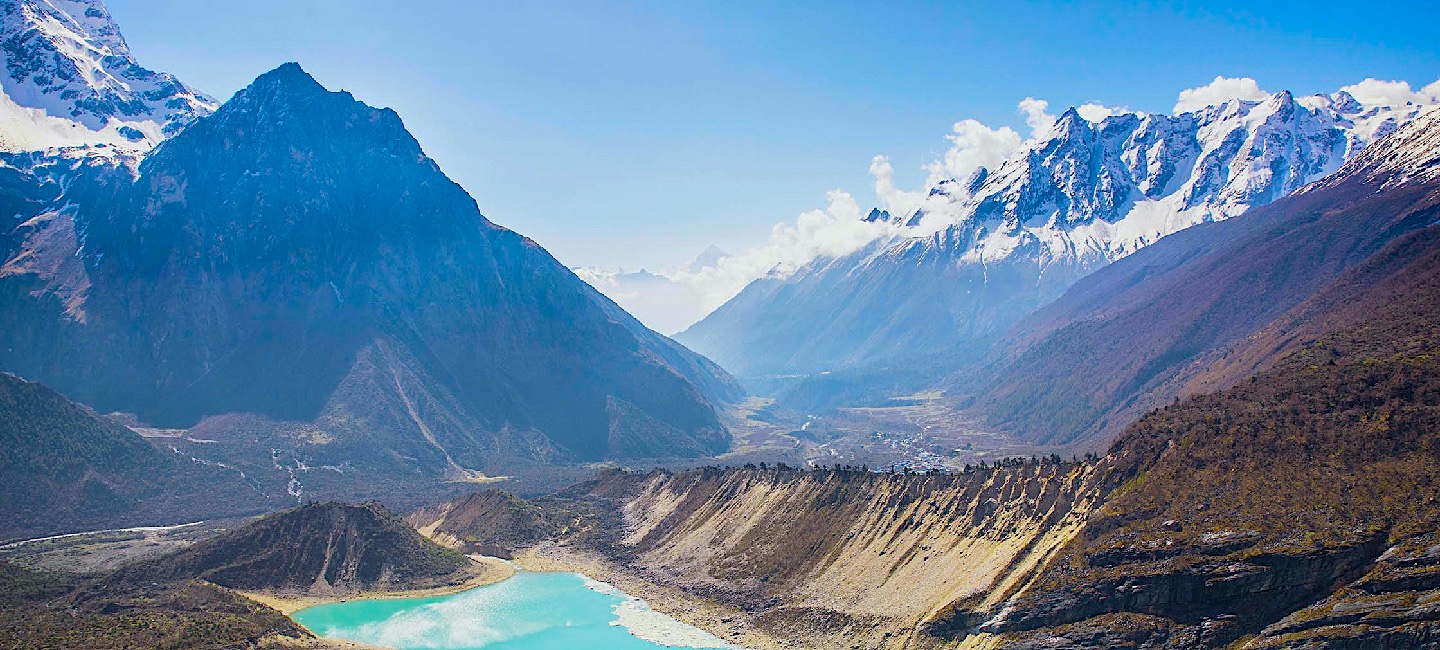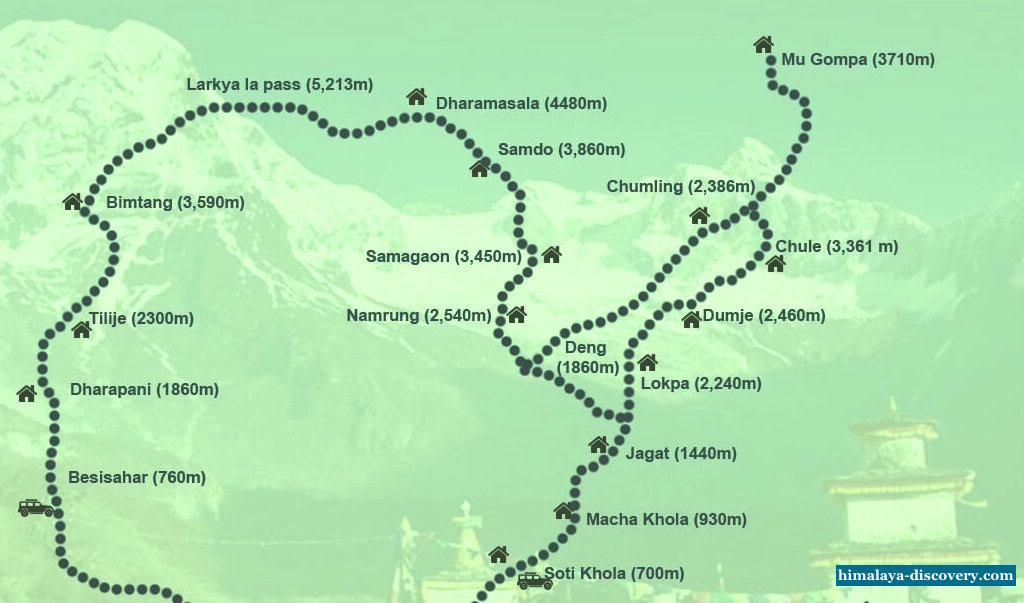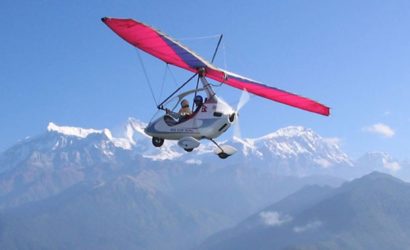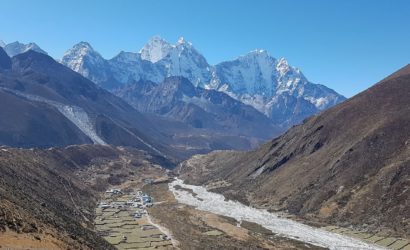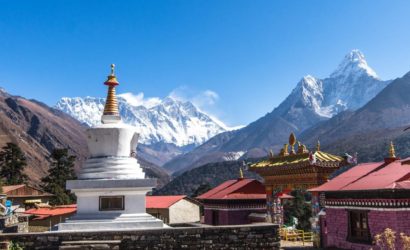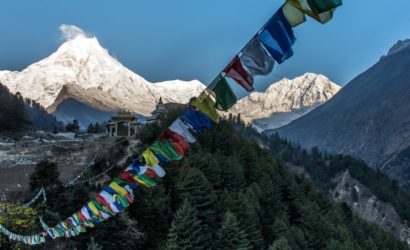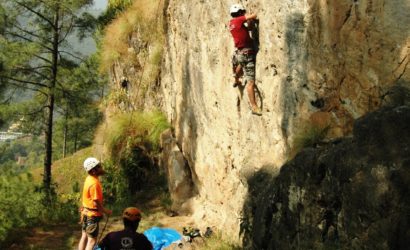Manaslu Tsum Valley Trek is a magnificent remote trek in Nepal. This journey takes you through the remote villages by the off the beaten paths. You’ll also reach near the border of Nepal and Tibet during this trek.
This trek highlights Nepal’s unique and traditional rural life. It is an opportunity to witness the beauty of nature and culture. During this trek the diversity of the landscapes, wildlife, and birds are incredible.
You can also visit Ganesh Himal base camp during this trek. As a looker-on, you experience the most spectacular views of the Himalayas between Nepal and Tibet. While passing via the Manaslu conservation area, you may sightsee the plants, animals, and birds.
The Manaslu Tsum Valley trek is undoubtedly the best experience of the lifetime. This trek is the perfect approach to knowing and learning about the blended culture of Nepal and Tibet. You’ll travel through various settlements with unique ethnicities and rich cultures.
Highlights of the Manaslu Tsum Valley Trek
- Ancient and beautiful Gompas like Mu Gompa, Rachen Gompa
- The Ganesh Himal Base Camp
- Adventurous Larke La Pass
- Visiting Ganesh Himal Base Camp
- Off the beaten paths and less undiscovered trekking trails
- The beautiful hidden valleys of the Manaslu region
- Trekking to the Tibetan border and exploring the Tibet side
- The diverse of natures, flora and fauna, centuries-old monasteries, chortens, and gompas in the region
- Breathtaking views of Mt. Manaslu, Simrang, Hiunchuli, Ngadi, Himal Ganesh and larke Peak
Manaslu Tsum Valley Trek Difficulty
You’ll have to walk for 5 to 7 hours per day for most days on the trek. It makes you almost footslog! Most trekkers slowly trudging from the midway. The journey takes you up to high altitudes. It’s common to be easily susceptible to altitude sickness, so you need to be aware about it.
There are many places where trekkers say that they have seen snow leopards. Going out alone during nights is dangerous. The remoteness of the journey adds difficulty to the trek. The trail is not well facilitated. You shouldn’t expect the whole trek for good lodging and food.
The Larke Pass is tougher to cross. There are a few other sections that are more challenging on the trail, prepare for it! Temperatures are extreme at high altitudes. Get suitable gears to stand up to unpredictable conditions.
On arrival in Kathmandu airport, after completing your custom Visa formalities, etc., pick up your luggage and look for our Himalaya Discovery Airport representative, who will display your name on the board at the gate. You will be greeted by our representative and escorted by private tourist vehicle to your hotel.
Early wake up in the morning. After having your breakfast, get ready! Check your luggage again. Your guide and porters o will be there to receive you at the hotel. From the hotel, we will drive to the bus station to catch a bus to Sotikhola. We’ll take a bus from here to the bus station.
The bus takes you in the west of the valley of Kathmandu. The journey is comfortable from Kathmandu to Dhading Besi over a blacktopped highway. You can enjoy, the view of green hills, beautiful terraces, farming and other rivers.
The bumpy drive begins, after we cross the Trishuli river. Getting to Arughat would take nearly three hours. The different landscapes, greenery and rural life you will admire while riding. We’re going to take a break for a while at Arughat. Arughat is a small local town with a Newari settlement.
So, we will drive from Arughat to Soti Khola again. After crossing the Budhi Gandaki river bridge, two hours of bus / jeep journey. Crossing the Gurungs and Magars ethnic groups, you observe their small and charming villages. On the way to Sotikhola, you see the millets and paddy fields. Overnight at guesthouse
After breakfast, we will begin our trek. We will cross the Sotikhola suspension bridge. The trekking route passes through a Sal-forest until we get to the ridge. We’ll see splashing Budi Gandaki River from the top of the ridge.
On continuing, we will reach Khursane. The trail passes through tropical waterfalls, cliffs and terraces. We’ll walk through the terraced fields to Labubesi. Labubesi is a lovely Gurungs village.
The trail leads from Labubesi uphill along Budi Gandaki River’s sandy riverbed, then we will reach Khanibesi. You can see a beautiful view of Ganesh Himal from Khanibesi.
We will descend towards Machcha Khola village, ambling along the beautiful trek route. Overnight at guesthouse.
We continue on the trekking to Jagat. The trek continues, following the narrow path to Tharo Khola. We walk along the river Budi Gandaki on a meandering route. After we cross a suspension bridge then we reach at Khorlabesi.
You can see a lovely view of the Ganesh Himal from Khorlabesi. The route is frequent ups and downs from Khorlabesi. We’ll walk over the pleasant route to the famous hot-spring at Tatopani. For some time, you can relax in the hot spring.
We will continue climbing another ridge from Tatopani. We are passing the Budhi Gandaki suspension bridge again. The trail is comprised of a stone staircase after crossing the river. After completing the staircase, we will cross a landslide. Now, we will reach at Doban. We will have to cross a suspension bridge again and continue to climb the stone staircase.
The trail now descends to a river and climbs a few stairs again. We will reach Thado Bharyang. Following the west bank of Budhi Gandaki the trail continues. We’re going to climb over a ridge and follow the trail down the river until we reach Jagat.
From Jagat, we will see Shringi Himal’s fascinating views. We’ll see some mani-walls and Chortens as well. Overnight at guesthouse.
Today is the day we enter the Tsum Valley restricted area. You must register your restricted area permit at the checkpoint in Jagat.
After a good breakfast in Jagat we will begin our trek. Shringi’s morning view is breathtaking. For a while we’ll follow the trail alongside the river. The trail passes through several parts of climbing and descending. We will get a sight of the settlement at Philim after walking for a while.
Before we reach Philim, we will cross a suspension bridge. At a lodge we’re going to stop for lunch. In Philim, there is a school. We are going to discover it and the village as we walk along the trek route. At the conjunction of the Ekle Bhatti trail and the Manaslu Tsum Valley trail you will see a welcome board.
We are continuing our trek to Lokpa, our today’s destination. Overnight at guesthouse.
Today is another long day trek. Please carry some energy bars and snickers. We will continue walking uphill after a good breakfast in Lokpa. The route goes uphill and takes us to the ridge. As we reach the top of the ridge, we see the Ganesh Himal’s most stunning views.
We’ll also visit the base camp of Ganesh Himal. We will continue our trek from the base camp towards Chumling.
The Chumling is a beautiful village located in the South direction of the beautiful Shingri Himal. It’s also known as the lower Tsum.
From Chumling, we will be continuing our trek to the Dumje village. Dumje is a nice place. Overnight at guesthouse.
After your breakfast, get ready to discover more about Manaslu trek. From there, the uphill journey to Chhokangparo will starts. This is one of the most exciting parts of the Manaslu Tsum Valley trek.
Locals welcome you with Tibetan traditional butter tea (Tibetan chiya) and some snack. It is best to take a few preventive measures because when you get from Chhokangparo you may feel the sigh of altitude sickness. Stay hydrated.
You are now heading to the upper part of Tsum. It’s beautiful and cold. Uphill, downhill, the dense forest will continue on your journey as your companion. You can also visit the Melarepa cave.
Continuing walking, you will reach Nile. It’s the last village until you reach upper Tsum. It lies on Shiar Khola’s west side. You will pass by Chule until Nile. Nile is about 20 km further than Chule. Overnight at guesthouse.
When you reach Mu Gumba, you will be close to the Tibet and Nepal border. It takes approximately 6-7 hours. It’s a long, tiring day. In this whole circuit, this is a highly popular and religious place. You will keep walking along the West side of the valley.
Mu Gumba is the region’s largest monastery. There are more than 100 monks in the Mu Gumba Monastery. Here are pictures of Padmasambhava, Avalokiteshwara statue and some religious books.
You feel truly surprised and influenced by the Tibetan landscape, culture and traditions. You will also see Lungdang Glacier in the East. The view is gorgeous, and the prayers are soul-fulfilling. Overnight at guesthouse.
Today you are going to adjust to this climate and temperature. You can walk around and discover the Mu Gumba area.
People around here go up to 5000 m during Monsoon to collect Yarsagumba which is a medicinal herb. It is in the wilderness half caterpillar and half plant. The prize is very high for this medicinal herb.
In the East and west part of this area there are two passes. You have the Mailatasachin Pass on the East side (5093 m) and you have the Thermal Bhanjyang (5104 m) towards the West. You can also walk to Pika Himal base camp.
You can also climb up to Kalung (3820 m) or Bhajyo (4030 m) where you can camp. You can also take permits to go and spend some time in Tibet.
The Dhephu Doma Gomba, 600 years old (3900 m), is a 35-40 minutes’ walk uphill on the western side, and they practice Buddhism every day. You will possibly also see snow leopards and musk deer. Overnight at guesthouse.
Your Mu Gumba discovery is over. This is another stage of Manaslu Tsum Valley Trek’s journey. It is now time to trek to Rachen Gumba. It is in the middle of the Valley of Shiar Khola. It will be 3-4 hours of walk.
You’re going to enjoy the walk downwards. You will trek through Chule down to the valley. Keep heading down to Phurbe. It’s a small village of Sherpa. A couple of homestays provide good food.
Rachen Gumba is here since 1905 AD. It is one of Tsum Valley’s largest nunneries. Inside this Rachen Gumba is full with historic paintings about Buddhism. One family member is either a monk or a nun in the valley. Overnight at guesthouse.
You will be following the same trail as before. You’ll trek down to the Chumling Valley.
Now, you will move towards the Lower Tsum leaving all those beautiful villages and landscapes.
It is the biggest and most beautiful village of this region. You will be staying here because there is a good accommodation facility available here. Overnight at guesthouse.
The small and beautiful village of Deng. You’ll continue to move downwards. It takes 4-5 hours to get a company of Ganesh Himal and Mount Manaslu while descending. It feels like nature calling you and urging you to stay longer.
Here you will face difficult ways, be careful. You’re going to cross the Budi Gandaki River. You will be welcomed by the bamboo forest. To reach the Deng village, you have to cross the Deng River. Overnight at guesthouse.
You will begin your journey from Deng village, following the Budi Gandaki River. Crossing the river and trekking uphill you will reach to Rana.
From Rana, you won’t find the straight and easy trails. This route is mostly zigzag in Manaslu Tsum Valley Trek trek. For most ways, it’s confusing.
You will have to ascend the stone steps passing waterfalls and streams. You will reach the Shringi Khola suspension bridge after 3 hours on hike. You’ll follow the trails toward Ghap village after crossing this bridge.
After lunch, you will follow green fields and enter in to a thick forest. Here you will see the waterfall, too. You will reach your destination which is Namrung after crossing the river on the wooden bridge and ascending a few hours.
Namrung is a gateway to upper Nuri. It is full of Tibetans’ community. Overnight at guesthouse.
From here you will have to trek uphill. Namrung is at low altitude but Lho is high altitude. On this trail is full of Barley fields. Lihi will be your next destination and it is full of houses and beautiful Chortens.
Himal chuli 7893 m is on the southern side of Lihi, though Ganesh is on the east side. The trail goes down to the Simnang Valley, which leads to the Hinang River too. Ngadi chuli 7873 m can be seen from the river where you can also see a few chortens.
Now it’s time for the Shrip to climb. You will reach at the ridge where Lho Village awaits you after a steep climb. You can see Manaslu north and Naike himal clearly from this Lho village for the first time on this whole journey.
Ribung monastery is lying above the Lho village. There is a place named Kani that is perfect for sunrise and sunset. It is better to go for the sunset in evening and the sunrise early in the morning. Overnight at guesthouse.
Today, you will just take a short hike to Samagaun, that will take you 2 to 3 hours. Mount Manaslu is all over you while following this route.
Splendid view of Manaslu is making your walk easier. The trail goes up after 3520 m of Shyala village, with a dense pine and rhododendron forest.
To reach Samagaun an extra 1 hour is a must. As you get closer to this village the mountains begin to disappear and you’ll see green pastures, yaks, and lots of stone-built houses. Samagaun is a large village and tonight you are staying here.
Due to the altitude, staying here in Samagaun is almost mandatory. Today is a rest day.
Samagaun discovery is a today’s task. This beautiful and large village needs all your attention. You can hike to Anie Gompa and Birendra Tal.
If you’re healthy enough and want to use this time other than resting then it’s best for you to visit Pungyen Gompa. You can see several glaciers from here.
You can also visit the base camp of Manaslu which would take you 6 to 7 hours both trip. Overnight at guesthouse.
On the Manaslu Tsum Valley trek, this short but exciting trek passes. It takes you 3450 m to the Birendra Tal. This part of trek is tough during the winter season.
You will have to pass through the Manaslu Glacier. You’re going to continue to pass and follow the river. The Samdo village is also known as the Tibetan refugee village. Tibet is only a day away from here.
All around you, you’ll see Juniper forest. But, you will always be fascinated by landscape, culture and lifestyle. From this village, Samdo peak is visible. Overnight at guesthouse.
Get ready and start walking after your breakfast at Samdo. Wasting time is not a good idea here.
Wide trails lead you to Budi Gandaki River. Cross this river and you will see mani wall following the route. You have to ascend through the Juniper forest. You can see lots of Mormont when you are traveling in Monsoon.
You will also see the Larke glacier. You can only reach this place after ascending the valley in front of you: Dharamasala. You’ll have the best view of Mt. Manaslu, Samdo, Nagdi chuli and Simnang himal. You can also see Mt. Manaslu glacier, Manaslu ice fall and many other magnificent mountains.
The Dharamasala village is seasonal. Small lodging is available. Along with blue sheep and Himalayan goats, you set your camp area here. You may encounter snow leopards also. Overnight at guesthouse.
You should start early ascend towards Larke glacier, which ends only at the top of the pass. It could be difficult to cross this pass because of heavy snowfall and strong winds all around.
It is not difficult to ascend but long walking over the mountain. Rocky underfoot when you are in the moraine would create some trouble walking.
You’re going to cross four frozen lakes as you walk ahead, wouldn’t that be exciting? Colorful Buddhist peace flags around the pass. From the summit of the pass, you will see Himlung 7126 m, Annapurna II 7937 m, Kangguru 6981 m, and many others above 6000m.
Now you need to go down. Be careful, this trail can be full of ice and snow. You are going to trek to Bhimtang through all these forests, mountain, glaciers and waterfalls. The view of Mt. Manaslu from this place is unexplainable. Overnight at guesthouse.
From here, it begins to trek towards the lower valley. Don’t get excited after all these altitudes you are heading down really low.
Continue your journey alongside the river and reach Hompuk village. You are persuaded by a coniferous forest and full of Rhododendron to delay your journey, but you should not stop there. Follow the trails alongside the Dudh Koshi River.
Enjoy this height, vegetation, and scenery because you will be descending your altitude from this place. Karche section is the area of the landslides so be extra careful. You will steep and descends from here.
You are now at Gho village. Continue your final destination to Tilje. Tilje is a brandy-famous Gurung village, and you have to taste it and have a good rest. Overnight at guesthouse.
Today is the last day of Manaslu Tsum Valley trek. Now, y You will drive to Besisahar. You are entering the Marshyangdi Valley through the shrubs forest.
You will be joining the newly constructed road before you reach the busy settlement of Dharapani. Once you reach Dharapani, there is a police checkpoint. You can either take a bus or jeep to Besisahar from Dharapani.
You’ll be in Kathmandu after a long, tiring yet rewarding journey to Manaslu Tsum Valley. You will drive along the Marshyangdi and Trisuli River to Kathmandu.
Terraces, rivers, valleys, mountains, and scenery will continue to amaze you. A final goodbye to the wonderful Manaslu Tsum Valley trek.
The trip concludes! We will drop you off at the airport according to your flight schedule.

